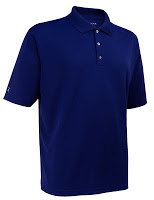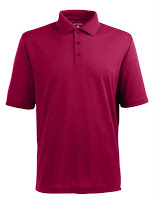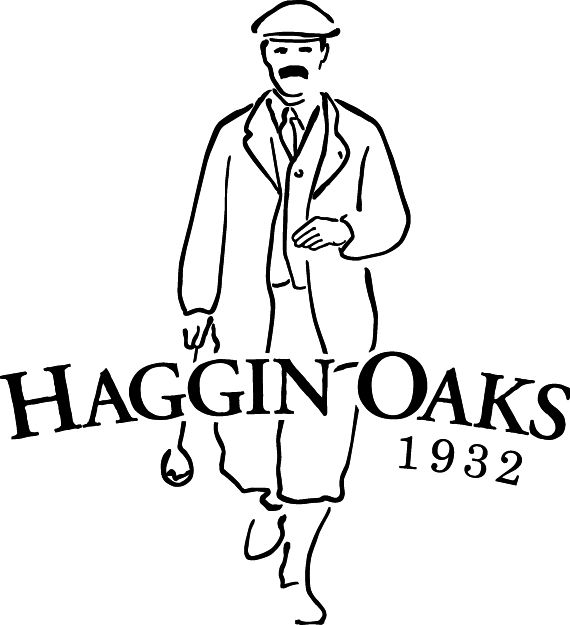Sean Gregg is the Director of Design and Development for Antigua and he recently answered some questions on Antigua’s Fall 2011 upcoming product line.
What is the most important trend in men’s golf apparel right now?
A: Color as a trend evolves seasonally as a bi-product of golf apparel having reached the status of fashion. Traditional color palettes are perceived as almost conformist so that fashion palettes are now often styled into most of the golf brand collections and tend to focus on the trend aspect of color – and that conceivably won’t change for the future.
But there are a couple of trends existing currently in men’s golf apparel that seem to be holding ground and are probably more specific to golf apparel than just focusing on being color current and one of those trends would be the use of layering garments. For instance Antigua’s fall 2011 outerwear collection has developed product specifically based on responding to consumer feedback and the desire for layering options. We believe the days are gone when you should only consider an outerwear piece for the start of the round and remove it at the turn.

The focus is now on developing product from the base layer up. Lightweight base layers such as our style Hero developed as a micro-fleeced back jersey mock can stand alone or can be worn under a performance polo such as Exceed, or with a mid-weight pull-over performance fleece style such as Succeed, or under a water and wind resistant wind shirt such as our styles Resilient and Highland. The new mentality from the tour player to the weekend golfer is that they want to be comfortable at any point during play and they look for layering options that correspond with the fluctuations in weather that occur especially during golf ‘season’.

And we’ve found the second biggest, more current trend, is happening with regard to apparel fabrics and specs. Like the evolutions in technology on the hard goods side, apparel as a counterpart also focuses on improving playing performance. We’ve developed lighter and lighter fabrics with the intention to perform faster with regard to wicking speed while simultaneously being less restrictive and minimizing garment friction during release with our Desert Dry Xtra-Lite (D2XL) fabrics.
The trend in narrowing specs is based on the same dynamic. The need to pull your shirt sleeve up over your elbow before set up has been eliminated from our performance collections by focusing on minor adjustments to specific core fit anatomy. We haven’t made smaller garments, we’ve made better performing garments while leaving areas like the torso spec intact. And additionally as we grade up in size we cease the taper in fit – realizing that a medium or large fit can be comfortably modified but tapering specs in XL’s on up begin to have disadvantages. And with that, as the population has grown in stature we’ve look to be accommodating in our offering to cater to that evolution as well.
What are you doing with color for fall ’11, and why?
A: As the performance apparel category began to take hold in golf it was inundated with derivatives of the activewear market with regard to the use of both color and fabric blocking. As the shift solidified and the trends diversified there appeared to be a lack of newness coming into the performance apparel markets especially when it came to brands that specialized in side-line apparel and dabbled in golf wear. Taking our cue from the fashion market and less from the collegiate market our focus was to be golf wear specific. We developed and have updated color palettes in what we coined ‘contemporary performance’. We transitioned from warm natural earth hues as was developed for our 2010 collections and smoothly updated that into a rich jewel palette for our 2011 performance lines. We believe we’ve made the distinction with both our brand and our product that our intention is to cater to all levels of the genuine golfer with our genuine golf apparel, both esthetically and functionally.
What has been the reaction among buyers to the new functional outerwear pieces?
A: We find that there’s a distinct correlation between the involvement in our product R & D and the acceptance by the consumer, especially with regard to technical details and features that demonstrate focus on both form and function. The positive response, as proven by placement in and sales out, offers reassurance that we’ve listened to our consumers correctly and it equally offers inspiration as we continue to develop new product in our functional outer wear offerings.

The long sleeve brushed torque shirt is a great piece in Antigua’s women’s line. How important is layering in the current marketplace?
A: We believe that there is little disparity with regard to the importance of layering in women’s golf apparel as compared to men’s. It has been an important component to both gender collections. And as we noted it as a trend earlier we concurrently believe that it is on it’s way to becoming less a passing fad of the industry and more a staple in golf apparel as a function of the sport and a necessity of it’s competition.
We see that fit and function are synonymous and our development focuses on each individual layer at a time. As an analogy, the introduction of performance synthetics in competitive swimming donned by athletes have performed so affectively that the full body suit has been banned from professional swimming competition dramatizing the genuine effects of focused performance product development. And though we’d like to think that our fabrics can be that effective during a round we appreciate the dissimilarity in functionality, but equally appreciate the importance of taking the direction of development seriously with regard to improving a golfers performance and that it can be maximized by the right choice of garment, layer or combination of layers for both women and men.
What is your favorite item in the fall ’11 line, and why?
 A: Our style Hero is made of one of the most comfortable performance fabrics we’ve developed. It’s light enough to be worn on it’s own in mildly cool temperatures and due to the technical construction it’s warm enough to hold out the unwanted elements. We’ve had this piece in the collection for a short time, but based on its popularity in accommodating layering needs we’re expanding into additional base layers such as ribs and textures as we’re finding the end user is buying and pairing a polo with a base layer one-for-one in milder weather. But I personally love the duality of the base layers.
A: Our style Hero is made of one of the most comfortable performance fabrics we’ve developed. It’s light enough to be worn on it’s own in mildly cool temperatures and due to the technical construction it’s warm enough to hold out the unwanted elements. We’ve had this piece in the collection for a short time, but based on its popularity in accommodating layering needs we’re expanding into additional base layers such as ribs and textures as we’re finding the end user is buying and pairing a polo with a base layer one-for-one in milder weather. But I personally love the duality of the base layers.

